The New York State Office of Renewable Energy approved the site permitting of three upstate utility-scale solar projects with 309 MW of total power capacity. The projects are developed by EDF Renewables North America and AES Corporation.
Three projects are set for construction in Cortland and Jefferson County, N.Y. and are expected to provide nearly $20 million of payment-in-lieu of taxes (PILOT) to host counties, towns, and school districts, and host community agreements to invest in infrastructure and other services over the first 20 years in operation.
The three projects are expected to drive $458 million in capital investment and create 460 short- and long-term jobs in development, construction, operations and maintenance.
Once operational, the facilities will add 542,000 MW of new renewable capacity per year, and generate enough power to support 69,000 homes per year for a 20-year PPA life, and reduce carbon emissions by more than 356,000 metric tons annually.
The projects include:
- Homer Solar Energy Center (90 MW, Towns of Homer, Cortlandville, and Solon, Cortland County), developed by EDF Renewables;
- Tracy Solar (119 MW, Towns of Orleans and Clayton, Jefferson County), developed by EDF Renewables;
- Riverside Solar (100 MW, Towns of Lyme and Brownville, Jefferson County), developed by AES Corporation.
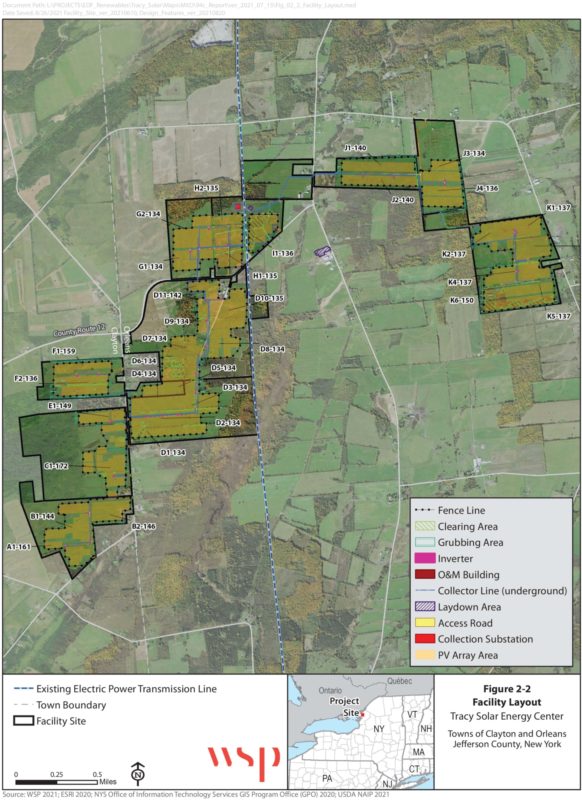
“The success of the section 94-C siting process is attributed to staff at ORES and its partner state agencies, as well as all involved stakeholders including local officials, community members, environmental groups, labor unions and the clean energy industry dedicated to building a cleaner, more resilient New York,” said Houtan Moaveni, executive director of the NYS Office of Renewable Energy.
National Grid, the utility system operator in Jefferson County, N.Y., pointed to grid congestion in its western N.Y. service territory at the recent NYSEIA 2022 Solar Summit conference in December.
“Distributed generation is not an alternative, it’s a whole new asset category that does not require a 100-year power line and wires upgrade,” said Tom Vaccaro, director of transmission for renewables at National Grid. “It can no longer be a stranded asset. Now it can be changed every 15 years with non-wire alternative solutions.”
In September, National Grid and Nexamp announced plans to install an 8.4 MW solar project with 10 Tesla Megapack batteries in Jefferson County, N.Y., providing 31 MWh of storage capacity, allowing the utility to call on 5.7 MW / 29 MWh up to 25 times per year from the panels or batteries.
Including projects sited through the state’s Board on Electric Generation Siting and the Environment, New York has approved 20 new renewable energy projects since 2021 with a total of 1.8 GW of power capacity.
New York has set ambitious goals for renewable energy procurement and buildout, including sourcing 70% of the state’s electricity from renewable and increasing solar deployment to 10 GW by 2030. Most recently, it outlined plans to roll out 4.7 GW of additional energy storage over the same timeframe.
Through Q3 22, the Empire State had 4.04 GW of installed solar capacity, with a devilish amount of 666.6 MW deployed in 2021, according to the Solar Energy Industries Association, ranking the state ninth in the country for solar.
With a five-year growth pipeline of over 8 GW, the state looks to be on track to meet its clean energy goals well in advance of 2030. Solar momentum spurred attendees of the NYSEIA 2022 New York Solar Summit conference in December to ask agency chiefs such as Doreen Harris, president of the New York State Energy Research and Development Authority, whether the state’s energy groups will increase their goal to 15 GW or more of new solar capacity.
This content is protected by copyright and may not be reused. If you want to cooperate with us and would like to reuse some of our content, please contact: editors@pv-magazine.com.
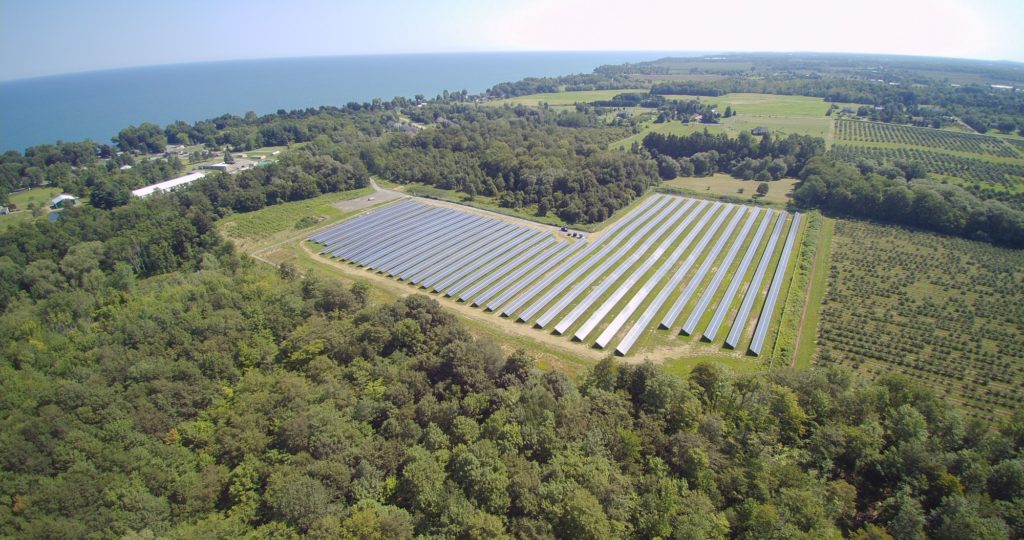
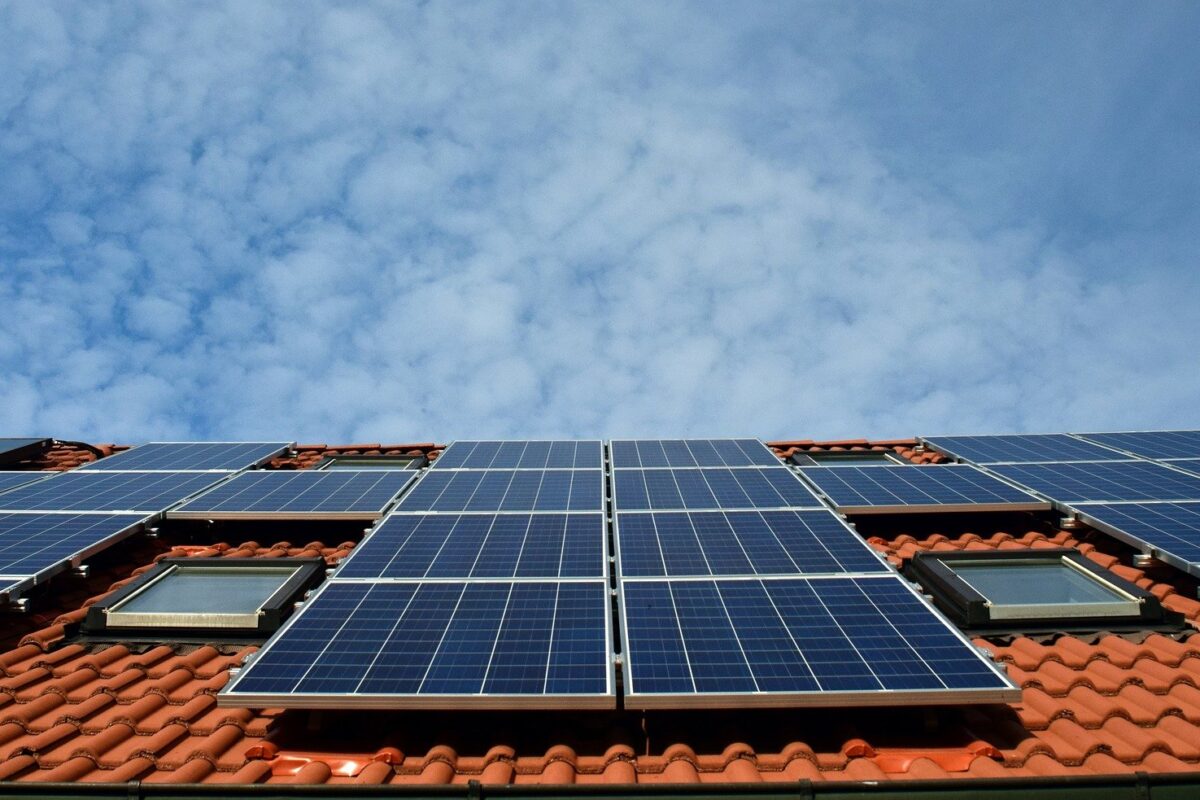



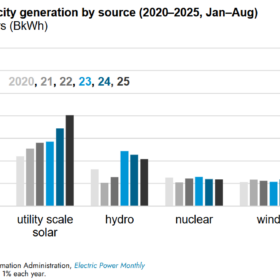


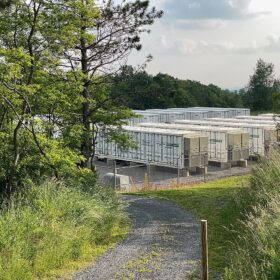
Utility Scale Solar is the best way to go. Most efficient, lowest cost per watt, highest capacity factor compared to rooftop, especially in northern latitudes.
Everyone benefits, not just those with MEAN$ who own their roof.
Another environment-destroying EYESORE, as well as destroying more FARMLAND to further push the “food shortages”. Leave it to democommunists to put “solar panels” in a state where the sun only shines 6 months out of the YEAR.